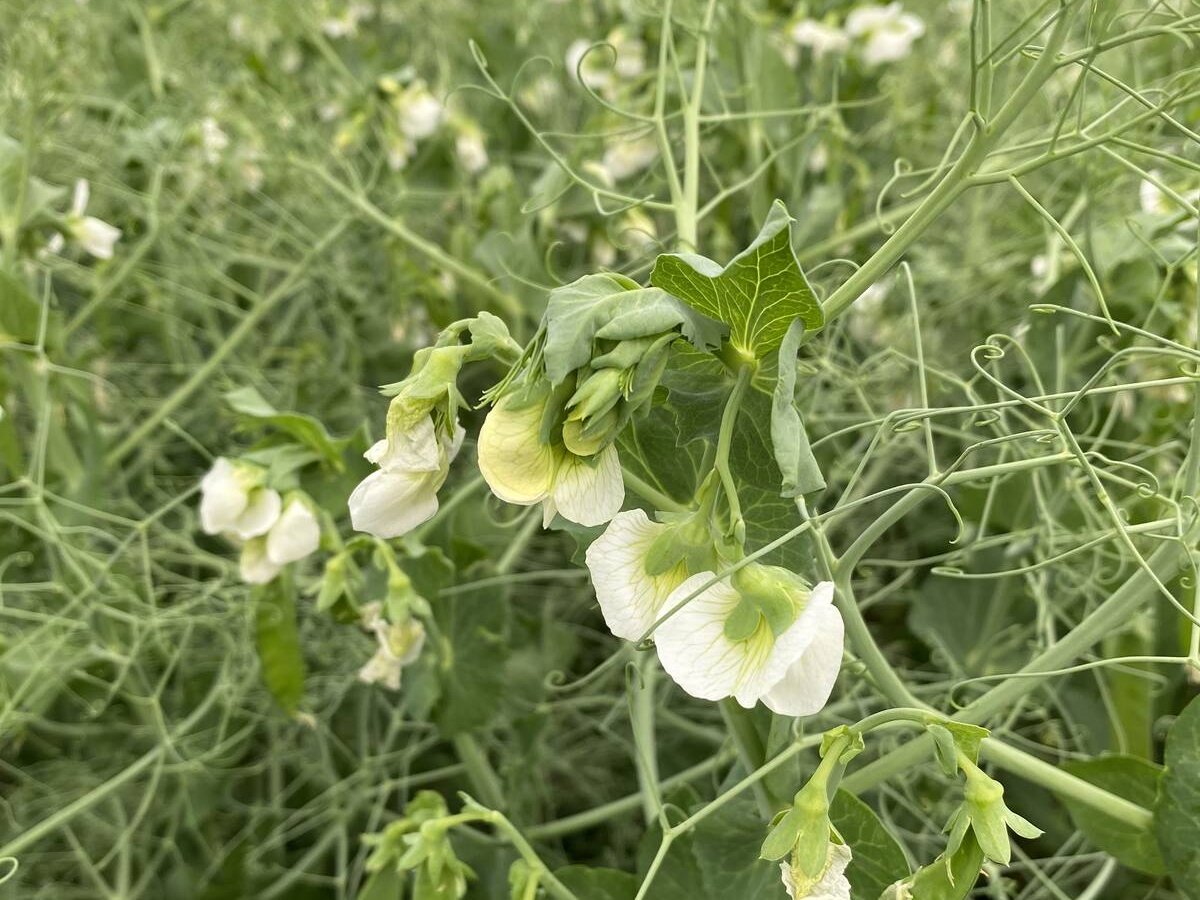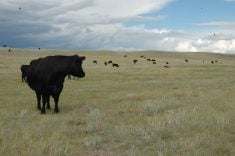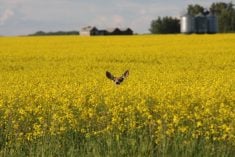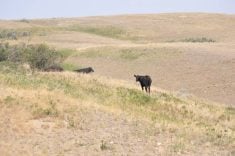Martin Unrau is a cow-calf producer from Manitoba who could ship beef to Europe, but he thinks the food safety requirements are not realistic.
“Europe has gone way beyond the scope of where they need to be,” said the Canadian Cattlemen’s Association vice-president and chair of the foreign trade committee.
It is cheaper to raise cattle to market weight with growth hormones, but he does not use them so that his Angus-cross calves can be exported to Europe.
“If there is a feedlot feeding for hormone free to Europe, I am on track,” he said.
Read Also

India slaps 30 per cent import duty on yellow peas
India has imposed a 30 per cent duty on yellow pea imports with a bill of lading date on or after Nov. 1, 2025.
“I believe economics will drive the management decisions that need to be made in Canada for hormone-free beef.”
The CCA has demanded full access with no tariffs.
“They have tried to flush us out a few times, but we are firm on that,” Unrau said.
Other issues include the way the cattle are raised on the farm and processed at the packing plants.
“The phytosanitary issues cost us a lot of money,” he said.
“At the end of the day, I always separate our production methods from our product. We want to sell you a product called beef that will be safe and produced in a positive manner so when they come here and look around, they are impressed,” Unrau said.
The CCA hosted a workshop with the Canadian Food Inspection Agency to make the European Union protocol easier to follow, said Mark Klassen of the CCA.
Even if a World Trade Organization agreement materializes, Canada still faces significant barriers. Those barriers make it nearly impossible to source enough suitable cattle.
As of May 2011, Canada shipped 170 tonnes of beef and offal to the EU this year.
The U.S. shipped 11,738 tonnes in the same time.
“The Canadian industry is facing some rather unique challenges, which limit exports and ultimately producer producing hormone free cattle,” Klassen said at the International Livestock Congress held in Calgary Aug. 9.
The most significant requirement is following protocols for certifying freedom from hormones.
A couple of western feedlots are following the program, but there are no eastern yards involved.
The origin of the ban can be traced back to a 1970s report about a hormone called DES. When it was given to humans, the daughters of the women receiving it showed signs of early puberty and more vulnerability to cancer. It was also found in baby food veal that was linked to birth defects.
Consequently, the EU suggested a ban on all hormones in 1980.
The Lamming Report in 1981 said these products do no harm when used appropriately, but the European Parliament had already decided it did not want hormones. By 1989, the ban was implemented and trade ended.
Other countries could impose similar standards.
Packers will have a difficult time segregating cattle that may have received the hormones. There are other major concerns at the farm level.
The first is a requirement for a special EU tag at $5 to $6 each. This was implemented in 1996 before the Canadian Cattle Identification Agency tag was introduced.
There is only one supplier for these tags and getting them on time is difficult. Cattle must be tagged before they leave the farm.
Urine testing at the feedlot is not easy and getting lab results back in a timely fashion is a problem. The U.S. does not require this for its EU program participants.
An accredited veterinarian has to supervise all procedures and Canadians have complained about the cost and frequency of visits to farms and feedlots.
“Canada will continue to use vets, but we must monitor costs. The U.S. and Australia do not require this,” said Klassen.
Transfer certificates from farm to feedlot to plant must be correlated with individual electronic cattle numbers so the animals must be run through chutes frequently.
Increasing the number of eligible cattle is important to have enough beef to export. Certified organic cattle should be automatically eligible.
“You can produce hormone free for the domestic market with a lot less hassle and it’s cheaper,” he said.
Hormone free cattle should also be available at an auction market so feedlots can find them easier.
“The U.S. and Australian systems already allow the sale of EU cattle at the auction market, so we need to have that too,” he said.
The must-do list is equally detailed for processors, with only two certified plants in Canada.
Large Canadian plants won’t export to the EU until technical barriers are addressed because it is not worthwhile. Kill costs at the small plants are up to $150 per head higher than a large facility.















